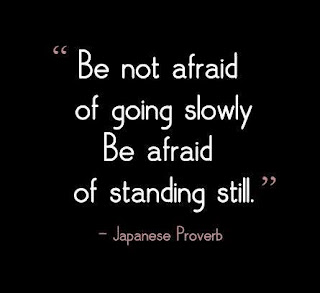by Phillip Starr
There's a saying that tells us, “A fish grows according to the size of its container.” Fish that are kept in small fishbowls don't get very large. Those kept in larger aquariums can become much larger. And so it is with the martial ways. When I was much younger, one of my taijiquan teachers (a fine Chinese gentleman whose taiji was a joy to watch and I'll just call him Bing) determined that he would enter a local tournament – in Chicago (!!!) - and show them just what gong-fu was all about. He was accomplished not only in taiji, but seven-star praying mantis and long fist (changquan) as well. He had no idea what he was up against, but I did and I tried to warn him. He thought karate was a weak martial art and he'd show them some genuine skill. When the sparring competition began, I saw many of my friends – all karate practitioners – and I warmly greeted them. This upset my taiji teacher a bit and when it came time for him to compete, he happily jumped into the ring.
Now, this was long before the invention of hand and foot pads worn today AND it was Chicago...their tournaments were notoriously violent and bloody in those days of the early 1970's. The two contestants bowed and the contest was on full tilt rock 'n roll. Bing's opponent's backfist smacked him fully in the face. He hadn't even seen it coming and his hands hadn't moved at all. The point was given to the attacker. Bing got up from the floor and settled into his fighting stance again...and was immediately knocked down with another backfist! The match was over and Bing's confidence in his fighting skill was so badly shaken that I had a tough time convincing him not to give up taiji and his gong-fu. But I did quickly convince him that he needed to get a “bigger bowl.”
I remember one karate instructor who told me that fighting Shotokan (a form of Japanese karate) stylists was easy because they always attacked in a straight line, leaving their flanks exposed. I asked how many Shotokan stylists he'd fought. You guessed it; he'd never squared off with one. Ever. I told him that they were darned tough and very dangerous because, although they do tend to attack directly forward, they're incredibly fast and their attacks are truly overwhelming. But he'd grown up in a small fishbowl. He didn't know any better. He found out. Painfully.
In those days, there was quite a riff going on between gong-fu and karate stylists. Much of it was created and maintained by the martial arts magazines of the day to promote higher sales. It worked, too. I met numerous karate practitioners who were convinced that gong-fu stylists were all about fluff and looking fancy, but couldn't fight their way out of a group of Girl Scouts. Many of them found out how wrong they were when they had to square off against the likes of John Morrow (one of my students), James Cook, Al Dacascos, or – God forbid – Tayari Casel (who is the fastest human being I've ever met).
I was fortunate in being able to train in Judo prior to taking up gong-fu. Later, I would study Kyokushin, and Shito-ryu karate (two Japanese forms; Shito-ryu is a close cousin to Shotokan) while I was also studying Chinese martial arts. Many years later I trained in Jeet Kune Do, too. I was curious. I took up Iaido in my mid-sixties and still practice it under a wonderful teacher. I recall my gong-fu teacher, W. C. Chen, telling me that most gong-fu teachers, although they taught one particular discipline, almost always had trained in other forms as well. He himself, had studied not only the three neijia, but also Baixingquan (a form of shaolinquan), and Hung-Ga.
Over the decades that I've been involved in the martial arts, I've met many practitioners – students and instructors alike – who ridiculed various martial forms without ever having had any direct contact with them. Such people live in very small fishbowls.

































.jpg)















.jpg)

.jpg)















